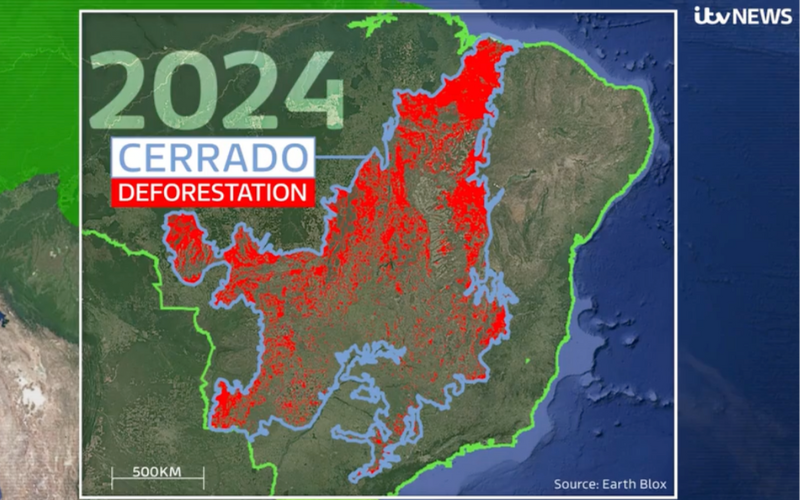Working with Capella Space to Investigate Forest Windthrow Damage from Storm Arwen
On the evening of 26th November 2021, not long after Scotland had hosted COP 26, storm Arwen brought havoc to Scottish forests. Blowing in from the north-east, Arwen was Scotland’s most damaging storm in half a century, affecting an estimated 1 million cubic metres of timber – that’s about 20% of the annual harvest. In response, Earth Blox, Capella Space and Edinburgh University have been working together to see if satellite radar can support efforts to map where the damage has occurred.
For forest owners worldwide, storm damage is second only to fire in terms of risk, based on severity and frequency of occurrence. Catastrophic damage to forests caused by wind is referred to as “windthrow”. When and where windthrow happens is not easy to predict, as it is influenced by many factors, not just the speed of the wind. It is therefore vital to collect information on where windthrow has occurred after an event so that the timber can be salvaged and impacts on the timber market can be mitigated. Typically, not only is there a risk that the quality of the timber degrades, but there is also a risk that recovered wood creates an oversupply on the local market and prices drop.
Time is therefore of the essence.
To aid recovery and support the management of supply it is essential to map areas of wind damage as quickly as possible. The forest owners and the sawmills need this information swiftly, but so do the insurance companies that support them. Wind damage is one of the most important insurable risks for planted forests. It is for this reason that forest insurers have been using the no-code solution-builder interface of Earth Blox to provide them with an easy-to-use web tool that can rapidly map the most likely windthrow. The simple drag-and-drop web interface of Earth Blox allows users to effortlessly tap into the global satellite data resources that comprise Google’s Earth Engine. Additionally, some users use Earth Blox to quickly gain insights into other kinds of environmental change, including flooding, agricultural drought, and wildfires.
The key challenge when trying to map windthrow is that it is difficult to tell the difference between wind damage and other changes to the forest, such as standard clear-felling (which may have been occurring right up until the storm). Other subtle variations in the forest may also suggest wind damage when there is none.

This is why teams at Earth Blox and Edinburgh University tasked the Capella Space synthetic aperture radar (SAR) satellites to capture highly detailed images of areas across Scotland where Earth Blox had identified sites of likely windthrow. With the capacity to capture imagery in the dark and through clouds, the high-resolution SAR images started to come through for analysis within 24 hours. The high-resolution SAR images from Capella have been used successfully to map other landscape changes, such as damage caused by hurricanes, landslides, volcanic eruptions, and wildfires. And as can be seen in the image below, even a quick visual inspection clearly picks out the areas of windthrow, as it looks like the forest has been “combed-over” – this is where the individual tree trunks are being picked up by Capella’s SAR. In these images, there is now no ambiguity as to what is windthrow and what is not.
With the rapid and large geographic coverage afforded by the Earth Blox tool, combined with the precision imaging from Capella SAR satellites, it is now feasible for forest owners and insurance companies to generate quick and accurate assessments of post-storm damage.
If you are interested in smarter, more efficient approaches to monitoring forest change, with the aim of reducing costs by improving speed and accuracy, then get in touch.


.png)
